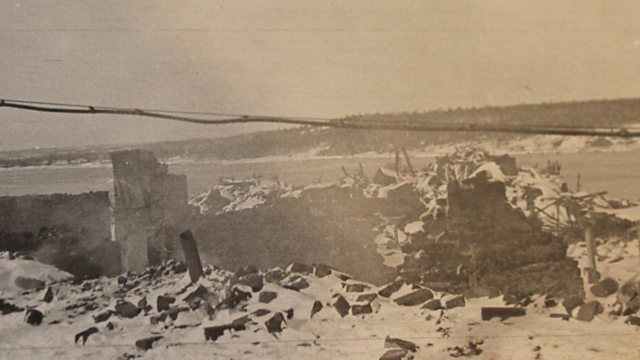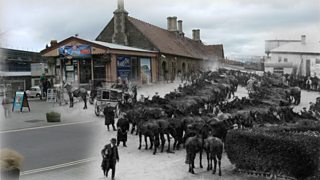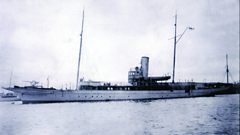Liskeard, Cornwall: Big Bang
The Cornishman who survived the largest man-made explosion before the atomic bomb
The largest man-made explosion before the atomic bomb happened at Halifax in Nova Scotia, Canada and a Cornishman was caught up in the mile-wide blast.
Before the Great War, Thomas Henry Symons (known as Harry) worked in Liskeard in the town clerk’s office.
'Harry' joined the navy first as a writer in December 1915. He served aboard HMS High Flyer at the Cape Verdi Islands. High Flyer completed convoy duties up and down the west coast of Africa, from the Cape to Gibraltar and later between Halifax, Nova Scotia and Great Britain.
The port of Halifax was a major hub for the supply of raw materials, munitions and men destined for the war in Europe.
On Thursday 6 December 1917 Halifax suffered the world's greatest man-made explosion to date when two ships involved in the war effort collided. The relief ship SS Imo collecting supplies destined for Belgium and the munitions ship SS Mont Blanc described as a huge 'floating bomb' because of her formidable cargo, was preparing to sail. On board SS Mont Blanc was more than two thousand tonnes of picric acid, more than 200 tonnes of TNT, 56 tonnes of gun cotton and 223 tonnes of Benzole.
The two ships collided with deadly sparks setting fire to the picric acid, in turn igniting barrels of Benzole on the deck of the SS Mont Blanc. The 'floating bomb' set fire to a pier igniting her remaining cargo.
Records show that at four minutes past nine that freezing December morning the munitions ship exploded, disintegrating in seconds.
One and a half square miles of Halifax was flattened instantly killing men, women and children in the path of the blast - the final death toll stood at over 1,900.
Standing on the shoreline was a British Naval lieutenant Victor Montague Magnus. An avid photographer, Victor was never without a camera around his neck. The images he captured show plumes of smoke and a town littered with ash on snow.
Meanwhile, Harry Symons’ ship, HMS Highflyer was caught in the blast but astonishingly Harry was protected by an awning collapsing over him.
After surviving the Halifax disaster and making it through to the Armistice - tragically Harry Symons died of pneumonia in Washington D.C on 21 December 1918. Back at home in Liskeard, it was Christmas morning by the time his parents heard the news.
Location: Liskeard Public Hall (where Harry Symons worked as a clerk), Liskeard, Cornwall PL14 6BW
Image: Ruins of the foundry at Halifax, courtesy of Anne Foreman
Duration:
This clip is from
Featured in...
![]()
���˿��� Radio Cornwall—World War One At ���˿���
Places in Cornwall that tell a story of World War One
![]()
���˿��� Front Life—World War One At ���˿���
Everyday life in the towns, villages and countryside
More clips from World War One At ���˿���
-
![]()
The loss of HMY Iolaire
Duration: 18:52
-
![]()
Scotland, Slamannan and the Argylls
Duration: 07:55
-
![]()
Scotland Museum of Edinburgh mourning dress
Duration: 06:17
-
![]()
Scotland Montrose 'GI Brides'
Duration: 06:41







